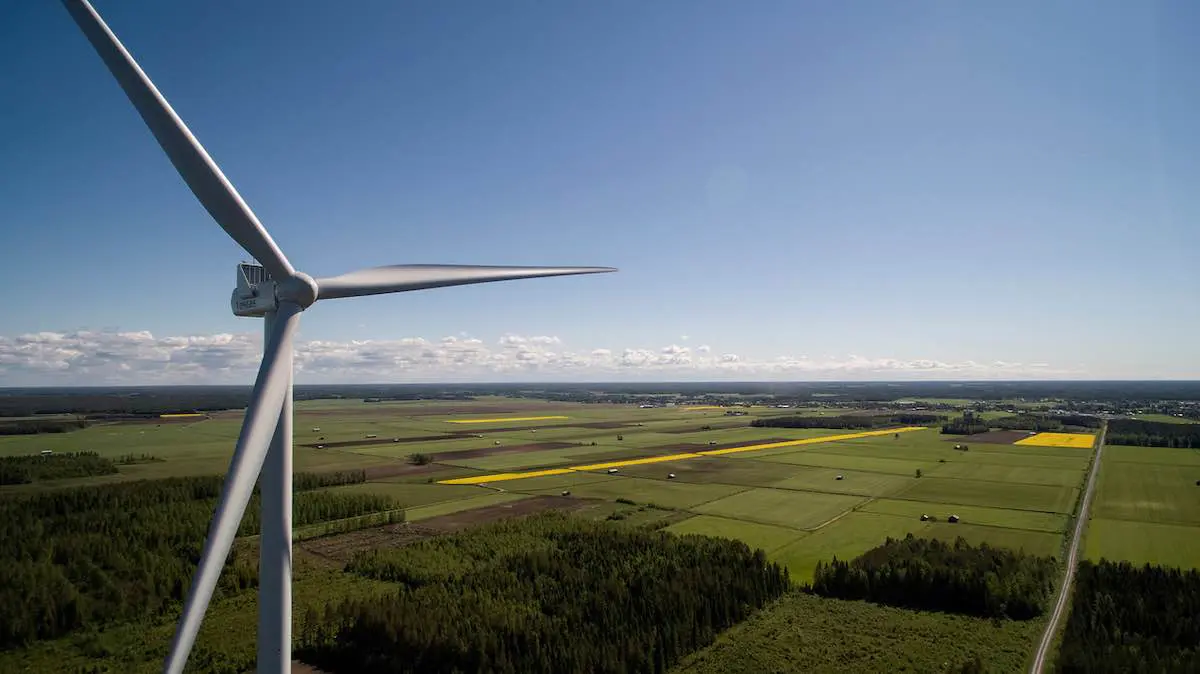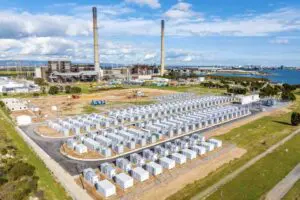Construction of the first stage of what will be Australia’s biggest wind and battery project will get underway in the new year, after the project’s developers reached an “innovative” financial close on the gigawatt-scale project – no power purchase agreements required.
The Golden Plains Wind Farm proposes to install a total of up to 1300MW of capacity and a 300MW big battery (storage not yet specified) near Rokewood, around 60km north-west of Geelong.
The first 756MW phase of the “mega-project” – fully owned by TagEnergy — will be the biggest wind farm in Victoria, overtaking the 530MW Stockyard Hill facility and is now slated to begin construction in early 2023.
The green light came after the project landed a unique financing deal: It will be the first fully merchant wind farm in Australia to be financed by commercial lenders.
The Clean Energy Finance Corporation (CEFC) has committed up to $175 million to develop Stage 1 of the huge project, marking the single largest investment in a wind farm by the federal government’s green bank.
That investment – as the CEFC puts it – has worked to “crowd in” an additional $1.8 billion of private sector funding, including an an impressive list of global financial heavyweights, including CBA, Westpac, Denmark’s EKF, Germany’s KfW IPEX-Bank, Japan’s Mizuho Bank and Bank of China.
The project’s equity will be 100 per cent owned by France-based TagEnergy, which bought stage one of the project from WestWind in its first foray into the Australian market.
TagEnergy has contracted the project’s original developers, Westwind, for 30 years to manage the wind farm, including community engagement. TagEnergy and Westwind continue to develop the 500MW plus stage two turbines and battery.
For the engineering, procurement and construction of the wind farm’s first stage, TagEnergy has locked in Danish giant Vestas to supply 122 of its V162-6.2MW wind turbines from the EnVentus platform – Vestas’ single biggest deal for an onshore wind farm in Asia Pacific.
Unusual investment model
TagEnergy CEO Franck Woitiez, a former head of Neoen Australia, says getting to financial close on the massive project without the need for power purchase agreements has come down to the company’s “innovative” investment approach.
“The broad acceptance of our unusual and more commercial investment model by major participants and financiers reflects a fast-maturing industry embracing inventive approaches helping speed both project timelines and the transition to clean energy,” he said.
“Financial close for Stage One is a major milestone for the Golden Plains Wind Farm and our commitment to the Australian market as we work with our partners to help realise Victoria’s and Australia’s renewable energy ambitions.”
CEFC chief Ian Learmonth says projects like Golden Plains Wind Farm are vital to fill the gap in energy supply caused by the accelerated exit of coal fired power stations.
“This landmark project demonstrates the ongoing evolution of the CEFC after 10 years of investment,” Learmonth says.
“Our investment expertise is helping the clean energy sector overcome significant headwinds, including supply-chain issues, rising prices and higher interest rates.”
CEFC head of wind investment Joe Harber says by offering a financial bridge between development and contracting, the green bank can fast track the construction of “vital” renewable energy assets.
“We are particularly pleased to enable these commercial banks to reach financial close on their first fully merchant wind farm,” Harber said.
“By filling this significant financing gap for developers, CEFC capital is supporting the accelerated development of critical clean energy projects essential to our decarbonisation.”
Legal troubles and an intervention
The milestone comes roughly six months after the Victorian government stepped in to make an amendment to state planning, expressly to allow the Golden Plains wind farm to proceed in the face of protracted legal challenges.
Since receiving its first set of approvals from the Andrews Labor government in 2018, the project has been dogged by legal challenges, headed up by the lawyer behind similar battles against fellow Victorian wind project, Bald Hills and against the Delburn wind farm in the Latrobe Valley.
The legal challenge to Golden Plains last year failed to get a hearing in the High Court of Australia, having been defeated in the Victorian Supreme Court and, in August of 2020, the Court of Appeal.
In June, Victoria’s state planning department wrote in an official Explanatory Note that any further legal challenges would further delay the project and so an amendment was required to allow the project to progress.
“The project will contribute to the Victorian government’s renewable energy transition and contribute to the state achieving its net zero emissions target for 2050, whilst also providing the economic benefits of jobs both in the construction and operation of the facility,” the document says.
The plaintiffs withdrew all complaints in July, according to TagEnergy.
A great project, built under strict rules
Woitiez says Victoria – which on the weekend resoundingly re-elected the Labor Andrews government along with its nation-leading renewables policies – is “an interesting state” to work in, with a lot of challenges remaining around the energy transition and the removal of coal generators.
But he says the Golden Plains community is mostly on board with the big wind farm and wants it to go ahead – and the government remains supportive.
“The vast majority of the community sees the benefit of the project to the region,” Woitiez told RenewEconomy this week.
“Everyone is well aware of the energy crisis and they know that it’s important that we deliver [more renewables].
“[Golden Plains] is a massive project, and it’s going to be a great project, built under very strict rules, protecting what needs to be protected.”
To this end, there have been some modifications to turbine layouts and numbers, in compliance with the Brolga Breeding Buffer permit conditions agreed with the state planning minister.
What comes next
With finance locked in, TagEnergy says an early works agreement with Vestas has enabled the finalisation of detailed design work, procurement of critical infrastructure, and additional road upgrades in the district to support construction.
Woitiez says that by signing on Vestas, TagEnergy has selected the leader in the field, with “considerable experience in Australia delivering projects on time.”
TagEnergy says building the $2 billion, 756MW Stage One development featuring 122 turbines will begin early in 2023, with the project expected to start producing green energy in the first quarter of 2025.










